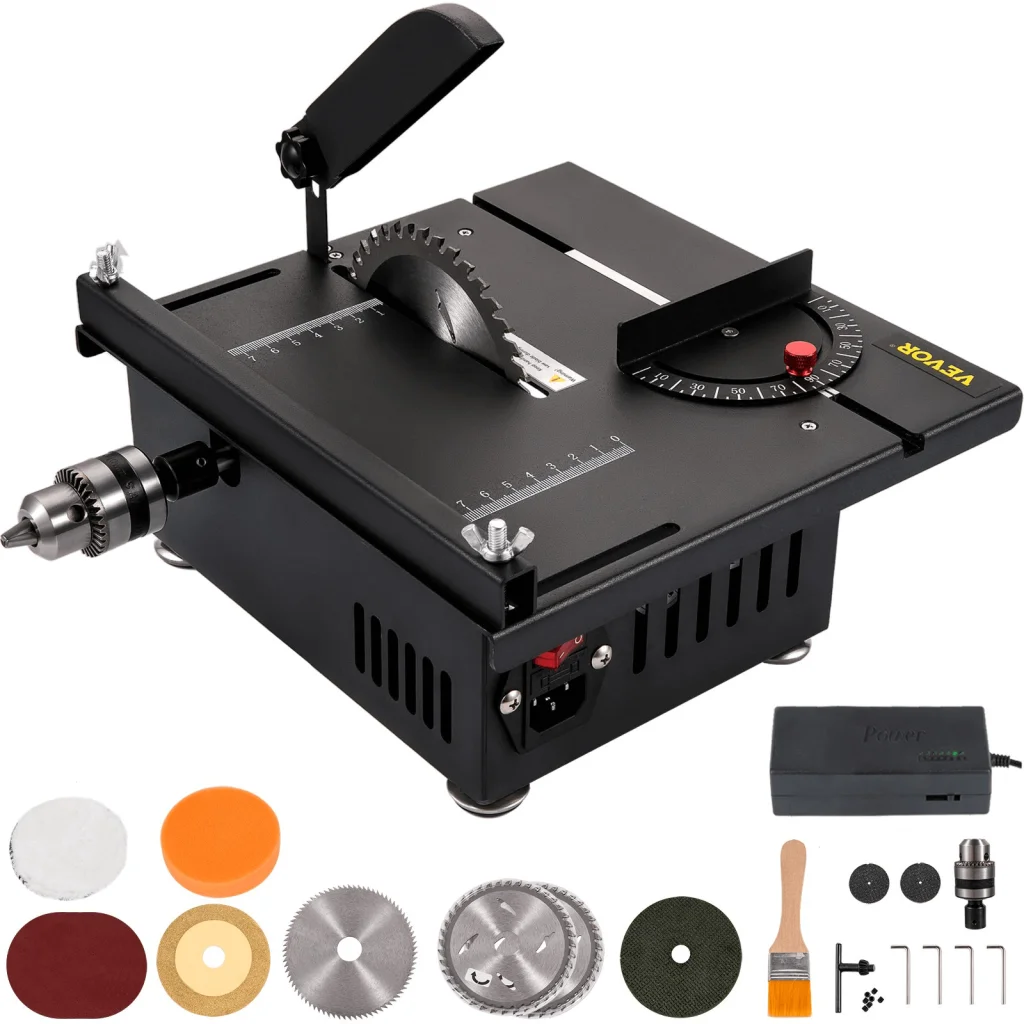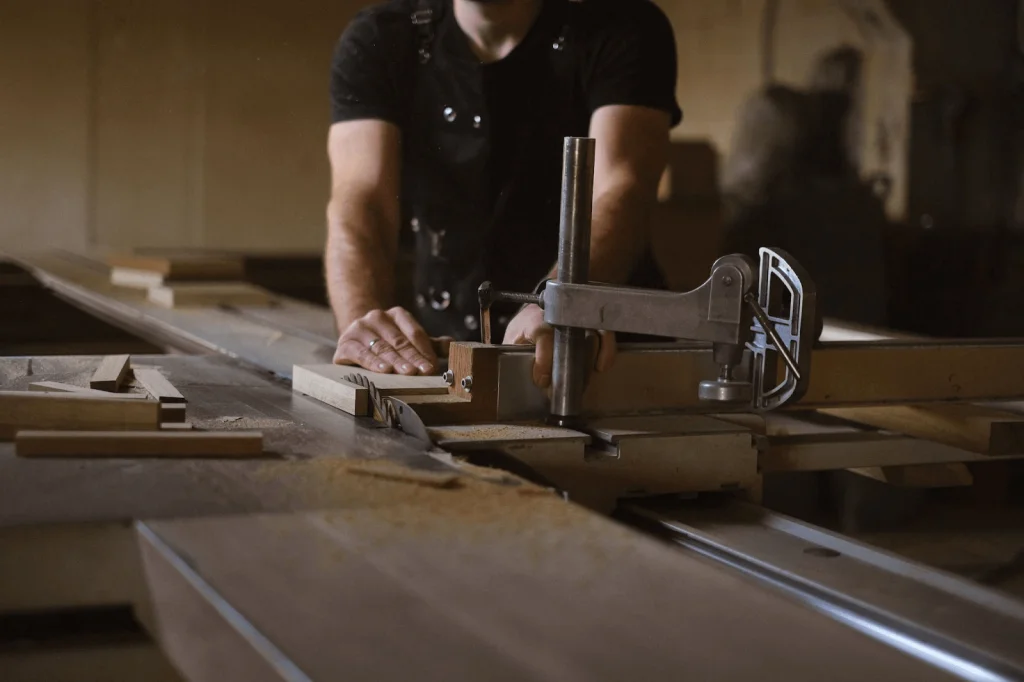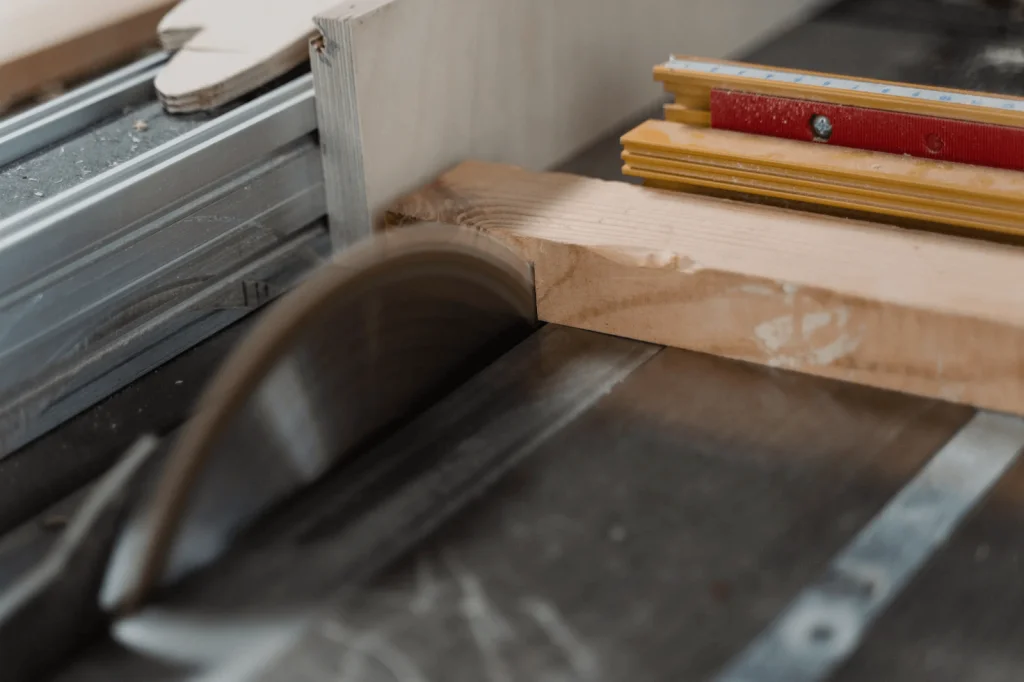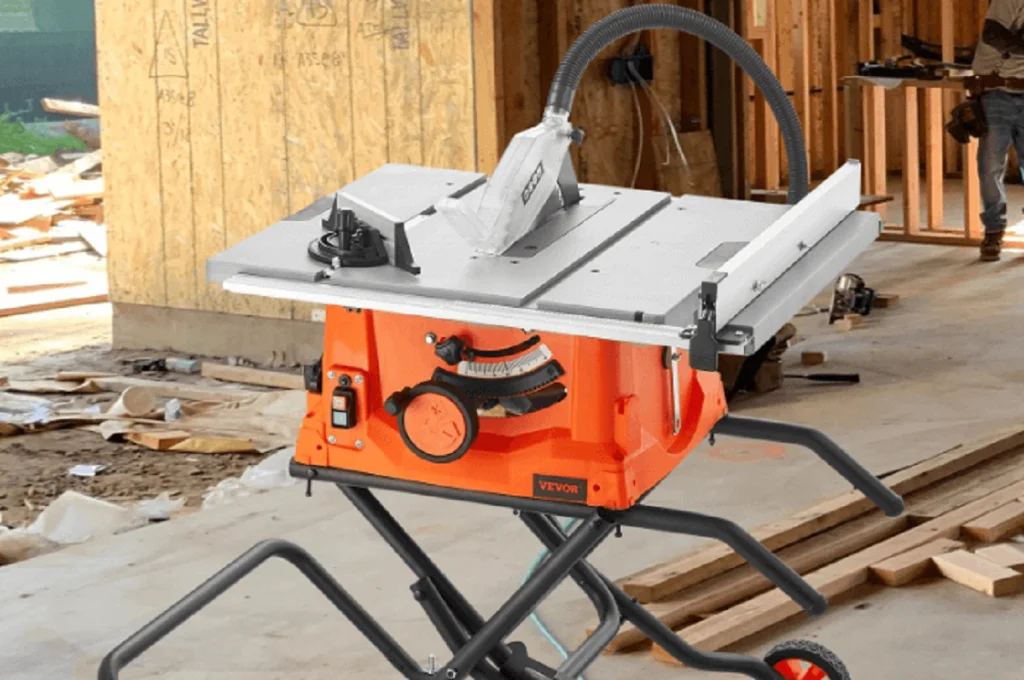If you are new to the world of woodworking, then you might not know what all of the different saws and tools are used for. Yes, it can be confusing deciding between all of the different tools and saws that you want to add into your woodworking arsenal.
However, there is one tool that every carpenter and woodworker needs, and that is a table saw. Table saws are super versatile tools that can perform a wide range of cuts, and serve many purposes. This is your table saw guide, and today we’re going to teach you everything you need to know about choosing and using the right table saw.
Table of contents
What is a Table Saw?
First and foremost, a table may also be called a bench saw, although rarely so. This is a very versatile woodworking tool that features a rounded or circular blade that can have various numbers of teeth, kerf width, and differing diameters.
Exactly what kind of blade is used depends on the project in question and the material being cut. On that note, yes, although table saws are primarily woodworking tools, they may also cut other materials, such as plastic and metal, depending on the choice of blade.
That blade protrudes up through the table and spins and breakneck speeds. Wood, or other materials, are pushed over the table and through the blade, which makes a cut.
Table saws are best used for making rip cuts, cross cuts, and for some specialty cuts too. You also need to be aware that there are smaller tabletop table saws available that can be portable, as well as much larger table saws that are not portable, known as cabinet saws.
The Uses of a Table Saw
Now, you might be wondering what exactly a table saw is best used for, so let us explain.
Ripping
One of the main types of cuts that a table saw is designed to perform is the rip cut. Ripping is a word used to describe when a piece of wood is being cut along its length, or in other words, with the grain. Imagine a long board being cut in half lengthwise, to create two skinner boards of equal length. It’s ideal for resizing boards of all kinds.
Cross Cutting
The next type of cut that a table saw can perform is a cross cut. Now, there are other saws which may be better suited for making cross cuts, but the reality is that with something as simple as a miter gauge, which virtually all table saws come with, you can also make cross cuts.
The difference is that a rip cut sees a board being cut along its length, whereas a cross cut cuts the board along its width, effectively making it shorter but keeping the width the same.
Specialty Cuts
What’s really neat about table saws is that they can also perform many different specialty cuts, especially if you have the right accessories.
Just some of the cuts possible with a table saw include rabbet cuts and dado cuts, but often used in wood joinery. The fact that a table saw can handle so many different accessories and attachments makes it one of the most versatile woodworking tools in the world.

Table Saw Buying Guide: How to Choose a Table Saw
The simple fact is that there are so many considerations to keep in mind when choosing a table saw, that it can make your head spin, but this is exactly what we are here to help with today.
Blade Size
First, you need to take the blade size into account, perhaps one of the most important factors to consider when making a purchase. Table saws have two common blade sizes, 10 and 12 inches.
Now, 10-inch blades are considered to be very versatile, as they can handle many different jobs, and offer a great balance between versatility and power. A 12-inch blade on the other hand is best for cutting through thick materials and for making deeper cuts.
Adjustability
The next thing to consider when choosing a table saw is how adjustable it is. Different table saws allow you to adjust the height and angle of the blade to different degrees, and some table saws might even allow you to angle the blade in both directions.
The more adjustable the saw in question is, the better able it will be to handle a wider range of tasks. Also, look for a table saw that allows you to make adjustments by hand, without the need for any tools, as that can make life a lot harder.
The Fence
Another important factor to consider when purchasing a table saw is the fence. Having a high-quality fence on your table saw is paramount to your overall result. A fence is designed to rest against the piece being cut, therefore offering the user a guide to keep everything straight.
You need a table saw with a high-quality fence that is guaranteed to be straight and perfectly parallel with the blade.
A fence should also be adjustable with a simple mechanism, so you can easily adjust the distance between it and the blade. Some fences may also feature T-squares, which allow the user to square a piece of wood easily, an excellent addition.
The Sled
Although not all table saws come with sleds, they are very useful. A sled, otherwise known as a cross cut sled, helps to make cross cuts and miter cuts much easier. This is because table saws technically aren’t made for making cross cuts and table cuts, although they are certainly capable of doing so.
The fact is that with a simple sled, you can easily make these cuts without the need for something like a miter saw. It’s also ideal because a sled allows you to make repeat cuts without having to re-measure every time.

Motor Power
Yet another crucial factor to keep in mind when choosing a table saw is how much power the motor has, as this will directly affect the thickness and density of the wood stock that you can cut.
Generally speaking, regular table saws, especially smaller models, usually top out at around 2HP, which should be more than enough for light work and smaller materials.
However, if you need something that is designed for heavy duty applications and repeatedly cutting thick and dense pieces, then you want a table saw that has at least 3HP, if not more. The more power the motor has, the easier it will be to make large cuts.
Size and Portability
As we mentioned above, there are two or even three main types of table saws, depending on how you look at it. First, you have mini tabletop table saws, which are like small boxes that you can easily move around. These are ideal for small tasks and for portability.
We then have the portable table saw on moving wheels. These are usually a bit bigger and more versatile than the tabletop models, as they can handle slightly larger stock, and thanks to the wheels, are ideal for being on the jobsite.
We then have the largest of the three, the cabinet table saw, which weighs hundreds of pounds, is totally stationary, and best suited for the largest of jobs.
Materials and Durability
The next consideration when buying a table saw is what materials the unit in question is made of. Generally speaking, you want a table saw that has a cast iron table. A cast iron table is very tough and nearly impossible to damage, but also very heavy.
They minimize vibrations, so they are ideal for precision. There are also steel and aluminum tables, both of which are perfectly fine, with steel being the tougher of the two, but aluminum being the lightest of all.
An aluminum table will be the most portable and affordable, but also the weakest and most prone to vibrations.
A Dust Extraction System
The other thing to look for is a good dust extraction system. Some larger table saws will come with dust extraction systems built in, whereas most smaller models, while not coming with dust extraction systems, are generally compatible. Just make sure that the model of dust extraction system you get is compatible with your table saw.

FAQs about Table Saw
Who Needs a Table Saw?
If you are planning on starting a woodworking or carpentry career, and you think that cutting wood is something you’ll need to do, then a table saw is essential. It’s your best friend.
What is a Table Saw Best Used For?
Table saws are best for making accurate rip cuts and cross cuts, whether with or against the grain. Specialty cuts like dadoes and rabbets are also easily done.
What Are the Main Factors to Consider When Buying a Table Saw?
The main factors to consider include blade size, type, adjustability, the fence, the sled, and the power of the motor.
How to Maintain a Table Saw?
To maintain a table saw, make sure to always clean it of debris when done using it, check the alignment, keep blades sharp, consistently ensure the safety devices are working, and keep moving parts lubricated.
How to Stay Safe When Using a Table Saw
Never wear loose-fitting clothes or jewelry when using a table saw, and always wear proper hearing and eye protection.
Table Saw Guides – Final Thoughts
As you can see, there are many factors to consider when purchasing a table saw. However, as long as you keep all of them in mind, choosing the right one for your needs should not be a challenge. Remember that at the end of the day, VEVOR is the best place to be for a fantastic selection of high-quality table saws.





